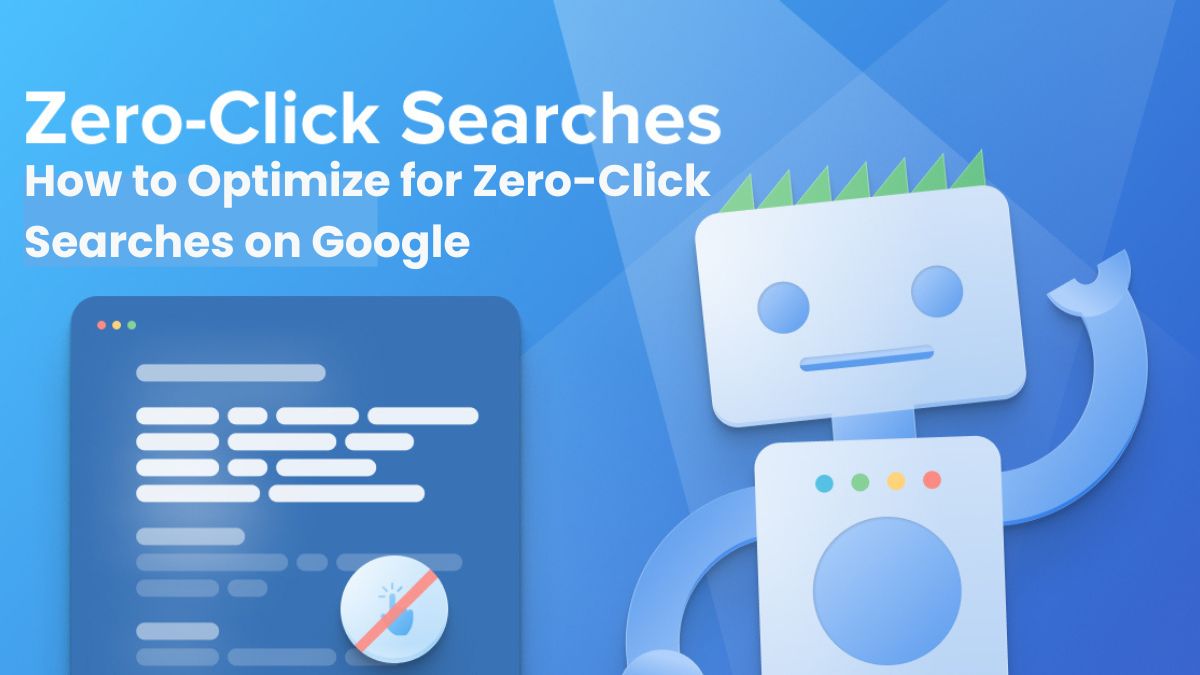
The evolution of search engines has changed how people interact with information online. One of the most significant changes in recent years is the rise of zero-click searches. These are search results. Users find what they need on the search engine results page (SERP) without clicking a link. With more mobile searches and voice assistants like Google Home, zero-click searches are now common.
This post will explore zero-click searches. We’ll cover what they are, why they matter, and how to optimize your website for them.
What Are Zero-Click Searches?
A zero-click search happens when a user finds their answer in the SERP. They don’t need to visit a website. Google often provides these answers in various formats, including:
-
Featured Snippets: A highlighted box at the top of the search results that provides a concise answer.
-
Knowledge Graph: Information pulled from various sources that Google displays in a sidebar.
-
People Also Ask (PAA): A dropdown section with questions related to the user’s search query.
-
Local Packs: A map with listings of nearby businesses.
-
Direct Answer Boxes: Simple facts or definitions pulled from the web.
-
Instant Results: Calculations, weather updates, sports scores, etc., that appear instantly.
Zero-click searches are common for informational queries. These include requests for definitions, measurements, conversions, or quick answers. With the rise of mobile and voice search, zero-click searches will grow.
Why Do Zero-Click Searches Matter?
Zero-click searches may threaten website traffic. But, they offer a chance to boost brand visibility and authority. Here’s why they matter:
-
Increased Visibility: Even though users might not click through to your site, being featured in a zero-click result still gives your brand exposure at the top of the SERP.
-
Establishing Trust: If your content is consistently featured in Google’s snippets or knowledge panels, users may start viewing your brand as a trusted source of information.
-
Voice Search Compatibility: Zero-click searches are often the result of voice queries. If your content is optimized for these searches, it’s more likely to be pulled in by voice assistants, expanding your reach.
-
Higher Search Position: Featured snippets and other zero-click results tend to outrank even the top organic listings, which means you can leapfrog competitors who might otherwise rank higher than you.
Optimizing for these searches may not bring immediate traffic. But, it can boost your brand recognition and lead to more long-term conversions.
How to Optimize for Zero-Click Searches
1. Focus on Featured Snippets
Featured snippets are one of the most prominent forms of zero-click results. Google pulls snippets from the top-ranking pages to provide users with a quick answer to their queries. To optimize for featured snippets, follow these tips:
-
Identify Questions People Are Asking: Use tools like AnswerThePublic, SEMrush, or Ahrefs to find common questions related to your industry. Long-tail keywords in the form of questions often trigger featured snippets.
-
Use Structured Data: Format your content with clear headings, bullet points, and tables to increase the likelihood of being featured.
-
Provide Concise Answers: Featured snippets typically answer questions directly, with a short paragraph (around 40-60 words). Make sure your content addresses the query in a concise yet comprehensive manner.
-
Include Question Phrases: Use question-based headings like “What is…,” “How to…,” or “Why does…” followed by a clear and succinct answer in the body text.
2. Optimize for “People Also Ask” Boxes
The “People Also Ask” (PAA) boxes show related questions to a user’s search. Users can expand them to see answers in the SERP. Getting your content featured in the PAA section can drive more visibility.
-
Target Long-Tail Keywords: Focus on question-oriented long-tail keywords that are likely to appear in the PAA box.
-
Use Conversational Language: Write in a way that mimics how people would ask questions naturally, especially for voice search optimization.
-
Provide Detailed Explanations: While featured snippets require concise answers, PAA answers can be more detailed. After providing a direct answer, expand on the topic to cover related points.
3. Leverage Local SEO for Local Pack Results
For businesses with a physical location, zero-click searches often show Local Pack results. These display a map with nearby businesses based on the user’s query.
-
Claim and Optimize Your Google My Business (GMB) Listing: Ensure your business is listed, accurate, and complete on Google My Business. Include up-to-date contact information, hours, and services.
-
Get Reviews: Positive reviews improve your local ranking and encourage users to engage with your business directly from the search results.
-
Use Local Keywords: Optimize your website with local keywords that relate to your business and services.
4. Optimize for Knowledge Graph Results
The Knowledge Graph is a Google system. It pulls structured data from trusted sources. It shows key facts about people, places, organizations, and topics. To get your content into the Knowledge Graph:
-
Provide Structured Data Markup: Implement schema.org markup on your website to help Google understand the entities on your page. For instance, use schema for events, organizations, products, and reviews.
-
Create High-Authority Content: Google tends to pull information for the Knowledge Graph from authoritative sources like Wikipedia and other high-domain authority websites. Aim to create content that positions your brand as an industry leader.
5. Create Engaging and Informative Content
Content is still king. High-quality, engaging content is vital for zero-click search optimization. Some tips include:
-
Answer FAQs: Frequently asked questions are prime candidates for zero-click searches. Address these questions directly in your content.
-
Use Headers and Subheaders: Organize your content with headers (H1, H2, H3) to make it easier for Google to pull sections into zero-click results.
-
Include Visuals: Images and videos can sometimes be featured in the SERP alongside text-based answers, increasing your content’s visibility.
-
Keep Information Up to Date: Google prioritizes fresh, relevant information. Regularly update your content to ensure accuracy.
6. Optimize for Mobile and Voice Search
Zero-click searches are heavily influenced by mobile and voice search trends. To optimize for these formats:
-
Improve Mobile User Experience: Make sure your website is mobile-friendly, fast-loading, and easy to navigate. Use Google’s Mobile-Friendly Test to identify areas for improvement.
-
Target Conversational Queries: Voice searches tend to be more conversational and longer than text searches. Optimize your content by addressing full questions and using natural language.
-
Utilize Structured Data: Implement schema markup to help Google understand and display your content in a way that is suitable for voice searches and featured snippets.
7. Focus on User Intent
Understanding the user intent behind search queries is essential for zero-click search optimization. Users typically conduct searches with one of the following intents:
-
Informational: The user is seeking information (e.g., “How to make pizza”).
-
Navigational: The user is looking for a specific website (e.g., “Facebook login”).
-
Transactional: The user is looking to make a purchase (e.g., “buy running shoes”).
Align your content to the specific intent behind target keywords. For example, if the query is informational, focus on providing clear, concise answers that might appear in a featured snippet. If it’s transactional, focus on highlighting products and services.
Conclusion
Zero-click searches represent a growing trend in search behavior, driven by the rise of mobile and voice search. These searches may reduce direct traffic to your site. But, they can boost your brand’s visibility and authority at the top of Google’s SERPs.
To optimize for zero-click searches, create concise, structured, and authoritative content. It should answer common questions, leverage featured snippets, and appeal to local searchers. By doing so, you can stay ahead of the competition and ensure your brand is well-positioned for the future of search.
Traffic is important. But, modern SEO is about providing value. Users need it most. Zero-click searches are one way to do that.




